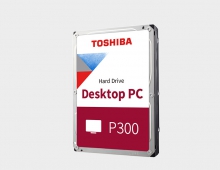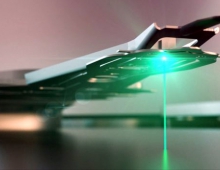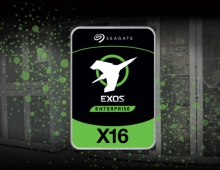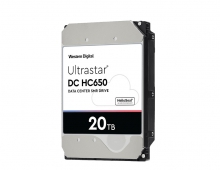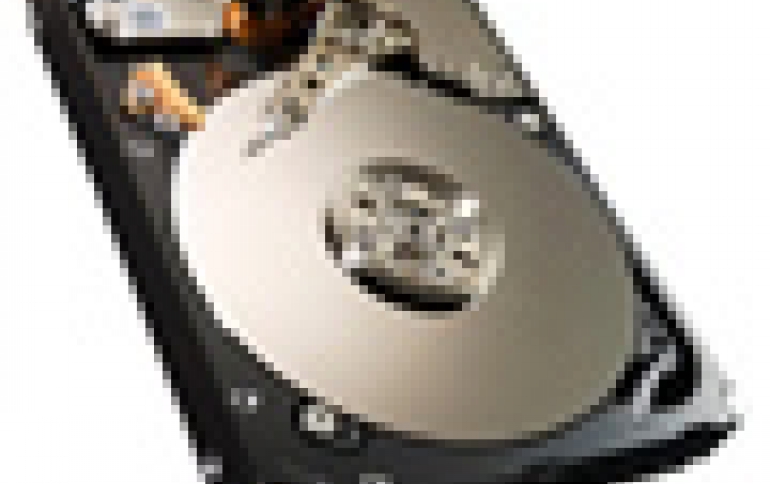
Future HDDs To Have A Data Areal Density Of 5Tbit /sqi
The latest developments in magnetism and associated
technologies were presented at the International
Magnetics Conference, INTERMAG 2012, held in in
Vancouver from May 7th to May 11th, 2012.
Many presentations were related to candidate
technologies that could be applied to hard disk drives
and increase their areal data density - the number of
bits that can be recorded per unit area.
Today's hard drive resembles a small record player that's capable of stacking its disks, or platters, to hold up to eight of them at a time. Each platter is covered with a magnetic film that is ingrained with tiny particles called bits. When a read-write head passes over the bits, it either magnetically aligns the particles to record information (turning them into series of 1's and 0's), or it reads them in order to access previously-stored data. These operations take place at phenomenal speeds; the platters spin around thousands of times per minute, and both sides of them are scanned simultaneously by read-write heads.
A challenge for increasing the areal density is the superparamagnetic effect. As hard drives become capable of storing more information and accessing it at faster speeds, their data becomes more susceptible to corruption.

Currently the HDD industry has improved existing HDD technologies but the data density limit of 1Tbit / square inch is very close. Ongoing research and development has leaded to new techniques that could break this limit. The main approaches are the following:
- Bit Pattern Media technology (BPM)
- Thermally Assisted Magnetic Recording technology (HAMR or TAMR)
- Microwave Assisted Magnetic Recording technology (MAMR)
- Single Magnetic Recording Single technology (SMR)

Bit Patterned media is a potential magnetic storage technology to record data in a uniform array of magnetic cells, storing one bit per cell, as opposed to regular hard-drive technology, where each bit is stored across a few hundred magnetic grains. It uses nanolithography to pattern the underlying media with the magnetic cells allowing for greater areal density than would normally be possible.
At Intermag 2012, Toshiba showcased a FePt bit-patterned media fabricated by a self-assembled polymer mask. The disc was 3.2nm thick and used a FePt alloy. The prototype media boasts an areal density of 5Tb per square inch.
Heat-assisted magnetic recording (HAMR) is a technology that magnetically records data on high-stability media using laser thermal assistance to first heat the material. HAMR takes advantage of high-stability magnetic compounds such as iron platinum alloy. These materials can store single bits in a much smaller area without being limited by the same superparamagnetic effect that limits the current technology used in hard disk storage. The only catch being that they must be heated to apply the changes in magnetic orientation. HAMR was developed by Fujitsu in 2006.
HAMR's challenges include solving a range of engineering challenges such as how to integrate laser diodes and recording heads. Patterned media proponents have yet to demonstrate ways to cover a full disk with tiny magnetic dots in a way that can be mass produced.
At Intermag 2012, a joint research team from University of Rochester and Western Digital proposed the use of a Fresnel lens (Paper: "An On-Wafer Diffractive Lens for Energy Assisted Magnetic Recording Technology") as focusing elements for the laser light. Fresnel lenses can be easily manufactured and can be applied using a lithography technique, decreasing the implications up and down the hard disk supply chain.
Using MAMR, a drive head emits a microwave field that excites the electrons in the media building up energy that eases the process of writing data. The process uses a localized high frequency ac magnetic field generated by a magnetic thin film stack integrated with existing recording heads.
A joint research group at Keio University and TDK showcased a on microwave-assisted writing of 500 Gb/sqi-class perpendicular medium. Hitachi, Ltd.'s simulation using microwave assistance also showed that the magnetic recording was possible at avery high density of 6.3Tbit/sqi.
Single magnetic recording technology (SMR) is actually an extension to today's perpendicular recording technology. The technique uses overlapping tracks and deliver drives with 1.5 to 2 Terabits of data per square inch of a disk.
Of course, the road to commercialization of most of these technologies is still a long.
Today's hard drive resembles a small record player that's capable of stacking its disks, or platters, to hold up to eight of them at a time. Each platter is covered with a magnetic film that is ingrained with tiny particles called bits. When a read-write head passes over the bits, it either magnetically aligns the particles to record information (turning them into series of 1's and 0's), or it reads them in order to access previously-stored data. These operations take place at phenomenal speeds; the platters spin around thousands of times per minute, and both sides of them are scanned simultaneously by read-write heads.
A challenge for increasing the areal density is the superparamagnetic effect. As hard drives become capable of storing more information and accessing it at faster speeds, their data becomes more susceptible to corruption.

Currently the HDD industry has improved existing HDD technologies but the data density limit of 1Tbit / square inch is very close. Ongoing research and development has leaded to new techniques that could break this limit. The main approaches are the following:
- Bit Pattern Media technology (BPM)
- Thermally Assisted Magnetic Recording technology (HAMR or TAMR)
- Microwave Assisted Magnetic Recording technology (MAMR)
- Single Magnetic Recording Single technology (SMR)

Bit Patterned media is a potential magnetic storage technology to record data in a uniform array of magnetic cells, storing one bit per cell, as opposed to regular hard-drive technology, where each bit is stored across a few hundred magnetic grains. It uses nanolithography to pattern the underlying media with the magnetic cells allowing for greater areal density than would normally be possible.
At Intermag 2012, Toshiba showcased a FePt bit-patterned media fabricated by a self-assembled polymer mask. The disc was 3.2nm thick and used a FePt alloy. The prototype media boasts an areal density of 5Tb per square inch.
Heat-assisted magnetic recording (HAMR) is a technology that magnetically records data on high-stability media using laser thermal assistance to first heat the material. HAMR takes advantage of high-stability magnetic compounds such as iron platinum alloy. These materials can store single bits in a much smaller area without being limited by the same superparamagnetic effect that limits the current technology used in hard disk storage. The only catch being that they must be heated to apply the changes in magnetic orientation. HAMR was developed by Fujitsu in 2006.
HAMR's challenges include solving a range of engineering challenges such as how to integrate laser diodes and recording heads. Patterned media proponents have yet to demonstrate ways to cover a full disk with tiny magnetic dots in a way that can be mass produced.
At Intermag 2012, a joint research team from University of Rochester and Western Digital proposed the use of a Fresnel lens (Paper: "An On-Wafer Diffractive Lens for Energy Assisted Magnetic Recording Technology") as focusing elements for the laser light. Fresnel lenses can be easily manufactured and can be applied using a lithography technique, decreasing the implications up and down the hard disk supply chain.
Using MAMR, a drive head emits a microwave field that excites the electrons in the media building up energy that eases the process of writing data. The process uses a localized high frequency ac magnetic field generated by a magnetic thin film stack integrated with existing recording heads.
A joint research group at Keio University and TDK showcased a on microwave-assisted writing of 500 Gb/sqi-class perpendicular medium. Hitachi, Ltd.'s simulation using microwave assistance also showed that the magnetic recording was possible at avery high density of 6.3Tbit/sqi.
Single magnetic recording technology (SMR) is actually an extension to today's perpendicular recording technology. The technique uses overlapping tracks and deliver drives with 1.5 to 2 Terabits of data per square inch of a disk.
Of course, the road to commercialization of most of these technologies is still a long.

